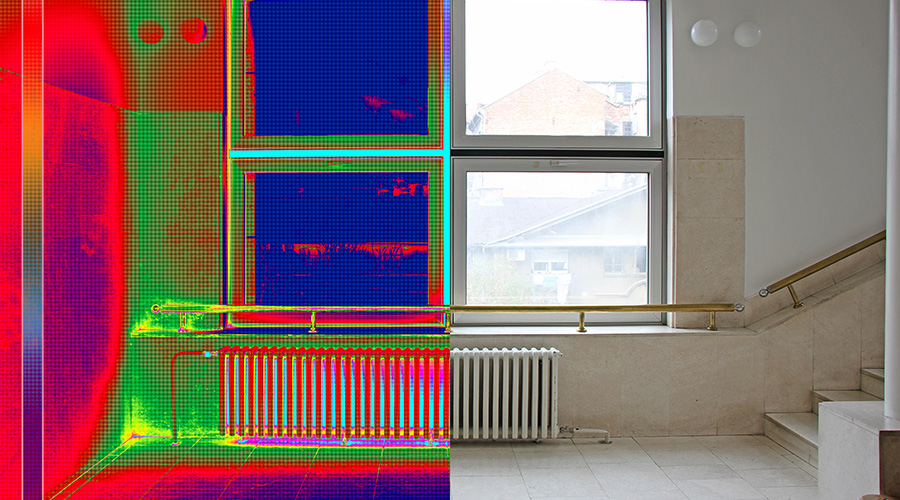Equipment Rental: Difficult Decisions
Managers must wrestle with the buy-versus-rent issue, as well as selecting the "right" equipment for the need
As pressure mounts on maintenance and engineering departments to control costs and find savings where possible, managers often face tough decisions on the most cost-effective way to meet a department’s need for equipment.
Renting a key piece of equipment might be appropriate option if workers only need to use it occasionally — or only in emergencies, while purchasing might make more sense if the equipment supports an ongoing task. Managers also must ensure they are renting the most appropriate piece of equipment for the task at hand.
A closer look at two types of equipment that departments often rent — aerial work platforms and portable cooling units — offers insights into the complex decision managers face.
Work Platforms: Rent or Buy?
Owning lift equipment might be the best option if workers use it frequently, which can justify the initial cost, as well as ongoing costs for insurance, maintenance and storage. Rental is the most common strategy, even in construction companies that use the equipment fairly frequently but with periods of idleness between projects.
Another factor that plays into the rental choice is the variety of activities maintenance workers perform. If some jobs are inside and others outside, for example, workers might require different types of lifts at different times. Some might be designed for rougher terrain and steeper grades, while others feature hard tires for use on inside, smooth and level floors.
If workers will use the lift fairly frequently but managers still hesitate to purchase, the best strategy might be to group several lift jobs together, rent a lift and do them all at the same time. The rental is an expense, so it can be written off as a tax deduction for the year during which the rental occurred.
This strategy also gives managers the chance to evaluate lift equipment and features on specific job-site conditions without having to make a long-term commitment or maintain the unit.
If a few short-term experiences have confirmed that the lift equipment meet the department’s needs, and if the finance department concurs that it makes sense to purchase a unit, a manager then can make the decision to purchase and depreciate the unit over several years. But managers also need to remember that with the decision to purchase comes the owner’s responsibility for equipment maintenance and insurance.
Cooling: Understanding Options
Portable, on-demand, HVAC technology has evolved in recent years to help facilities cope with cooling emergencies and where demand is temporarily greater than system capacity, such as special events. To select the right cooling equipment that protects occupants and equipment in such situations, managers need to fully understand their cooling technology options.
Managers have numerous options, from conventional circulating fans and small, portable 12-volt spot coolers to roller-mounted room or area evaporative air coolers and large truck-mounted, 500-ton chillers, which can temporarily substitute for permanent, in-house chillers. Coolers can be more or less permanently situated, as in the case of an extensive repair, or they can be placed for a shorter time or temporary condition.
Aside from conventional portable fans, the three main cooling options are:
• air-cooling, or blowing air over finned tubes, which cools hot fluid to within 5 degrees of ambient
• evaporative cooling, or evaporating water, which works best at 85-100 degrees and where air is fairly dry
• air conditioning, or cooling and dehumidifying by mechanical refrigeration, which works best where the cooling requirement is below 85 degrees.
Evaporative cooling requires air changes to work best because it adds moisture to the air. It works best in dry air — 50 percent relative humidity (RH) or below — and where air is not recirculated but can be ventilated and replaced. Its main advantage is low cost and its suitability for outside or inside use.
Air conditioners that use a refrigerant to remove heat from air are available in many sizes and applications, including those well below the temperature range of evaporative coolers. The capacity of portable air conditioners is up to 5 tons. These units both cool and dehumidify, and they require refrigerant charges of about 30-70 ounces of HFC134a or similar, chlorine-free refrigerant.
The cooling range varies from 12,000 Btu for a 1-ton unit to 60,000 Btu for 5-ton units. Mounted on casters, their small size makes them easily portable. Since they fill a condensate tank in a few hours, technicians should situate them where they can reach a drainpipe to eliminate the need for emptying the tank. At 60 percent RH, they remove up to 4 gallons of water per hour.
For large applications such as temporarily providing cooling while in-house chillers are overhauled, cooling service companies offer units as large as 500-ton truck-mounted chillers, complete with their own generators.
Some examples of where this service can pay off by providing uninterrupted cooling while emergency power is restored or equipment is undergoing repairs include a large telecommunication central switching facility, a school, a hospital, and a central computer server facility.
Reviewing these issues carefully can help managers determine their best options and make a cost-effective decision.
Personnel Lifts: Maintenance Considerations
Personnel lifts and aerial work platforms vary considerably by make and model, but all of them can benefit from daily inspections of an array of essential components:
PLATFORM
Inspect the platform assembly and control panel, specifically:
• lock-bolts for tightness
• the foot switch for proper operation and evidence of obstruction
• switches, which should be in neutral
• signs, labels and instructions for legibility
• safety latches, toe boards, railings and guards to ensure they are in good condition and working properly.
BOOM OR LIFT
Inspect:
• the jib and main boom assembly or scissors lift to ensure that pins and pivot points are in good condition, properly attached and locked, and show no signs of bending, pinching or wearing
• lube points for signs of lubrication at all lube points. Dry or dirty lube fittings may mean that the lube points haven’t been used
• the control valves for leaks, loose hoses, frayed wires or damaged insulation, making sure support brackets are in place and tight.
FRAME
Inspect:
• the four-wheel assemblies for tire condition and proper inflation
• the drive hub and brakes for signs of brake fluid leakage, caked dirt, lack of lubrication and for missing or loose lug nuts
• the steering cylinders, tie rods and steering linkage for wear and proper fluid levels and lubrication.
|
Related Topics:











